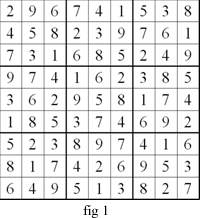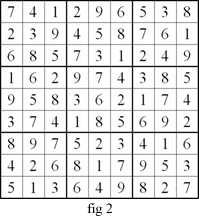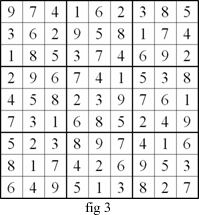Twin chute-swapping Sudoku
A pair of Sudokus with lots in common. In fact they are the same problem but rearranged. Can you find how they relate to solve them both?
Problem
By Henry Kwok
Twin A
Twin B
Rules of Twin Chute-Swapping Sudokus
This Sudoku consists of a pair of linked standard Sudoku puzzles each with some starting digits.
As usual, the object of this Sudoku is to fill in the whole of each 9x9 grid with digits 1 through 9 so that each row, each column and each block contain all the digits 1 through 9.
Twin B is related to twin A in the following ways:
Given that twin A is the original puzzle, twin B is obtained by swapping a horizontal/vertical chute or band of blocks with another horizontal/vertical chute or band of blocks. By such transformation, twin A and twin B are essentially the same or equivalent Sudoku puzzle.
For example, fig 2 is created from fig 1 by shifting the first chute of 3 blocks sideways to the right and the second chute of 3 blocks sideways to the left.


Similarly an equivalent puzzle (fig 3) can be created from fig 1 by shifting the first chute of 3 blocks downwards and the second chute of 3 blocks upwards.

The three puzzles are equivalent to one another. Equivalent puzzles can also be created from fig 2 and fig 3 by similar transformations.
Student Solutions
Twin A solution
Twin B solution
